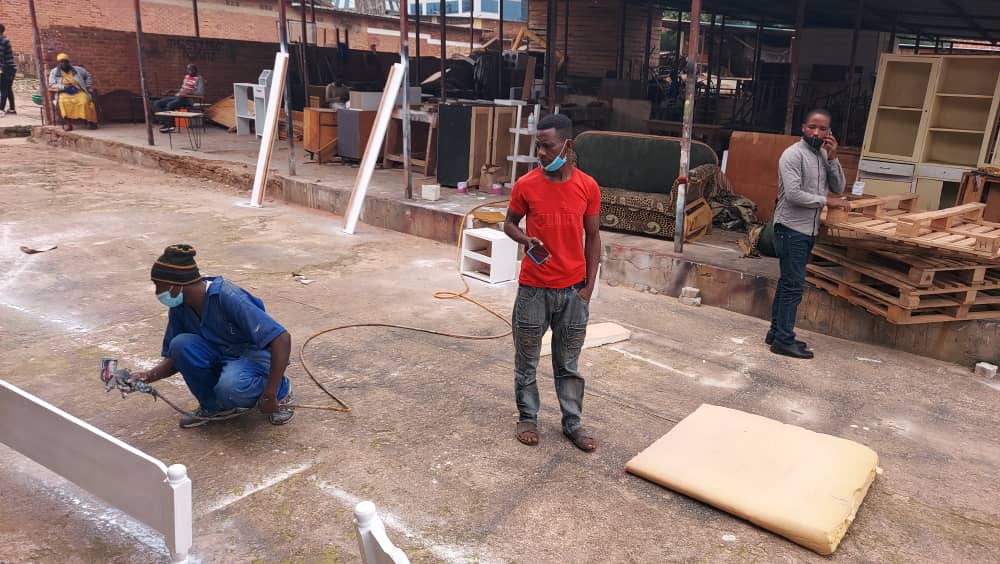
Mentorship programs led by former street youth play a transformative role in supporting at-risk adolescents and those currently living on the streets. After successfully completing rehabilitation programs—often involving technical and vocational education (TVET) and psychosocial support—these individuals are reintegrated into society, gaining employment or starting their own businesses. They become empowered to mentor others, acting as living proof that transitioning away from street life is possible.
This article explores the power of peer mentorship through real-life experiences of former street youth in Kigali, Rwanda.
1. Why Mentorship Matters for At-Risk Youth
Mentorship is especially vital for underprivileged youth from low-income or rural backgrounds. Adolescents, typically around 15 years old, often have ambitious dreams without understanding the path to achieve them. Many are vulnerable to misinformation, peer pressure, or unrealistic expectations, which may leading some to leave school early or migrate to cities in search of quick income.
According to UNESCO, over 244 million children and youth remain out of school globally. As a result, urban migration often ends in disappointment. Due to limited job opportunities, many youth find themselves homeless and turn to street survival strategies. Therefore, mentorship can prevent this trajectory by guiding youth early on—helping them understand the realities of urban life, the importance of education, and the value of long-term planning.
The Role of Mentors
- Teachers, youth leaders, and role models offer trusted guidance
- Mentors emphasize the value of staying in school
- Parents are reminded of their critical role in youth development
In addition, mentorship builds awareness, critical thinking, and resilience—essential traits for avoiding street life and making informed life choices.
2. Former Street Youth as Mentors: Preventing and Rehabilitating
Former street youth are uniquely positioned to provide both preventive and rehabilitative mentorship. Their lived experience enables them to connect deeply with those still on the streets or at risk of joining.
- Preventive Mentorship: Helping vulnerable youth stay in their communities
- Rehabilitative Mentorship: Guiding street youth through recovery and reintegration
Through acquired skills in TVET programs—such as those provided by Rwanda TVET Board—and psychosocial support, former street youth model alternative paths to survival, emphasizing work over street activities like theft or begging.
The Importance of Effective Rehabilitation
Incomplete rehabilitation leads to poor mentorship outcomes and increases the risk of relapse. Consequently, adequate support is needed to break the cycle of poverty, homelessness, and recidivism.
3. Building Trust Through Peer Support in Rehabilitation
Peer support is one of the most effective tools in rehabilitation. In Kigali’s Kacyiru Sector, the Ubuzima Bushya Iwacu Cooperative (New Life at Home Cooperative) serves as a model. Members, all former street youth, offer skills training in carpentry and conduct outreach visits to their peers still living on the streets.
The Iwawa Rehabilitation Centre in Rwanda is a key institution providing the psychosocial and vocational foundations for this work. Because they share a common past, trust is easier to build. But without financial support—for stipends, meals, or training supplies—youth are hesitant to leave street life.
Community-Based Rehabilitation: A Cost-Effective Model
This peer-led model enables youth to train without relocating to rehabilitation centers. As they learn and earn, time spent on the streets declines, and hope for reintegration rises.
4. Empowering Street Youth Through Connection and Guidance
Many street youth trust former street youth more than officials or NGO staff. Through mentoring relationships, they gain:
- Hands-on skills training (e.g., carpentry, bicycle repair)
- Health and substance abuse counseling
- Support networks and role models
Former street youth also help identify peers who require formal rehabilitation, providing vital links between marginalized youth and services.
5. Success Stories of Transformation
Carpentry Cooperative in Kacyiru
Members of the cooperative received workspace and startup toolkits from the Business Development Fund after graduating from Iwawa Rehabilitation Centre. One member shared:
“I returned to street life twice. What changed was joining the cooperative and learning carpentry. After two months, I could afford rent. That gave me hope and motivation. Now, I plan to save and become a full cooperative member.”
Bicycle Riders’ Cooperative in Kimironko
In Kimironko Sector, another former street youth founded a bicycle cooperative. Starting with daily savings of just 100 Rwandan Francs, they eventually qualified for a loan from the Business Development Fund. Today, the group not only supports its members financially but also mentors new youth—especially school dropouts at risk of entering street life.
6. How to Start or Support a Youth Mentorship Program
Peer mentorship only works with sustained support. To ensure impact:
- Provide financial backing for tools and training
- Ensure seamless transition from rehabilitation to reintegration
- Foster a culture of resilience and initiative
Government and NGO investment in mentorship can reduce street youth populations and increase employment and community inclusion.
7. Final Thoughts: The Ripple Effect of Peer Mentorship
When former street youth are empowered to mentor others, entire communities benefit. These programs reduce homelessness, promote dignity, and show that transformation is possible with the right support.
As shown in programs supported by organizations like the World Bank, youth empowerment is key to sustainable community development.
